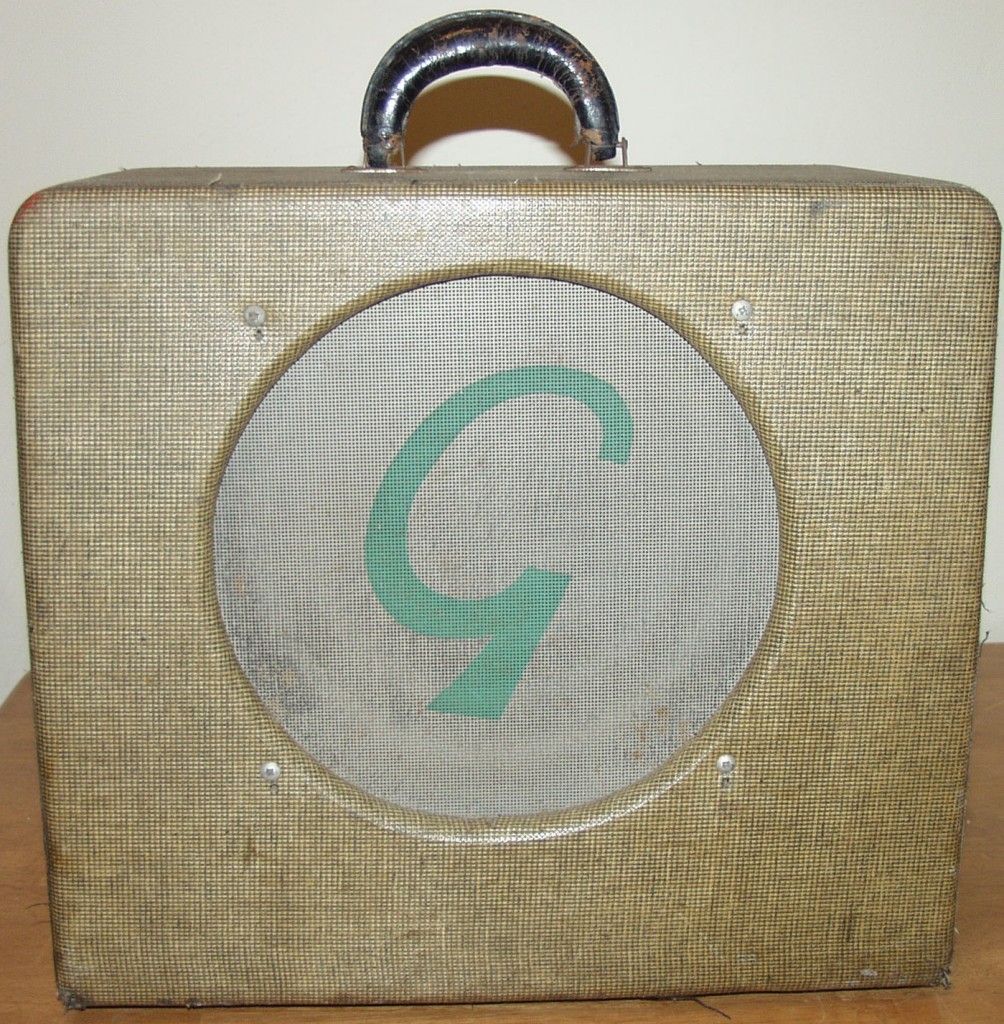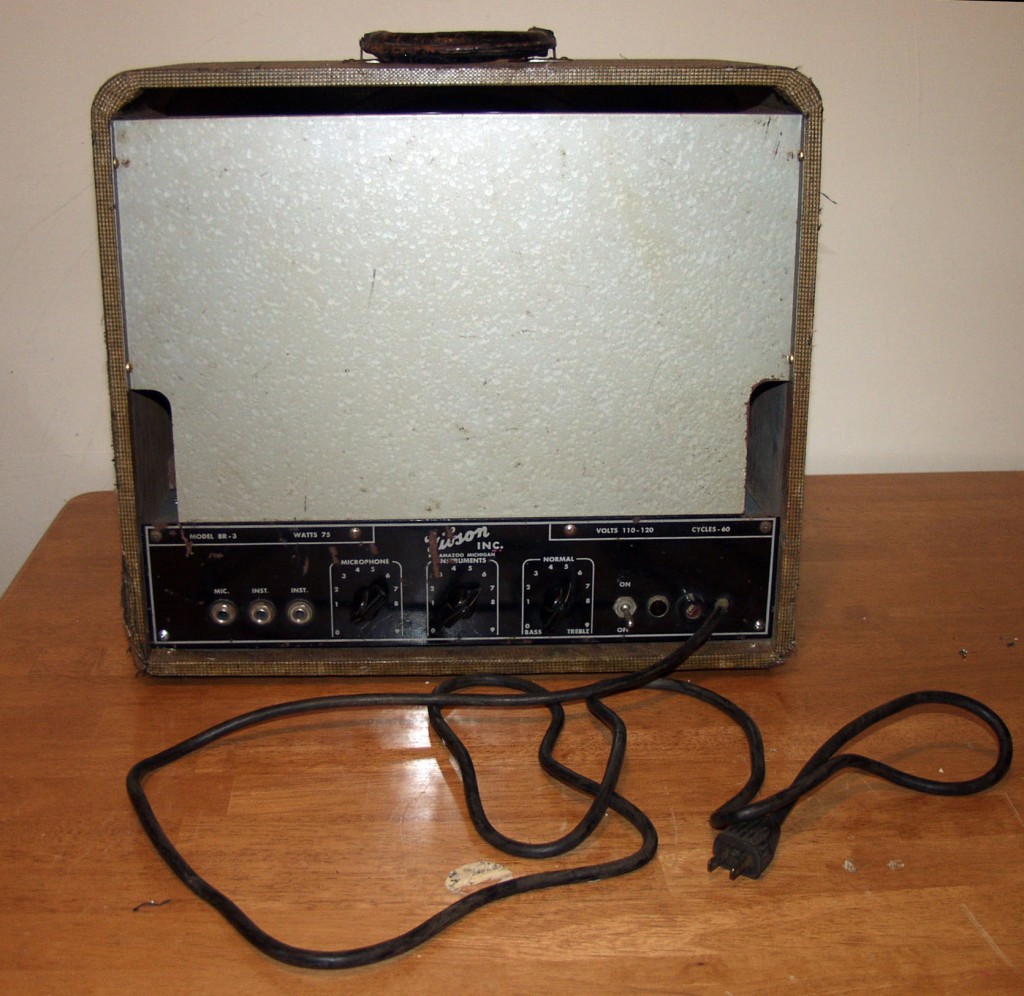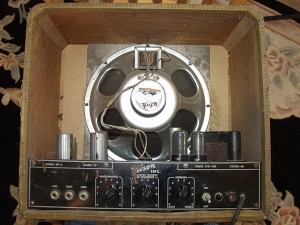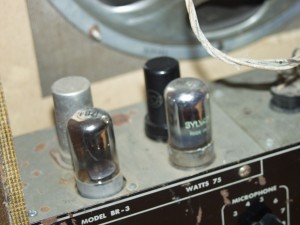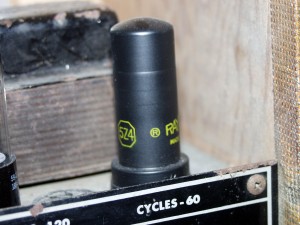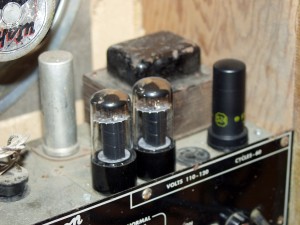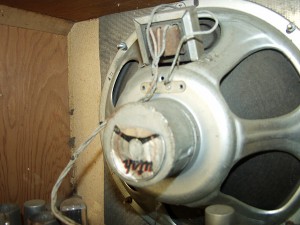Right after WWII ended, Gibson started production on the first set of BR series amps (designs by the Chicago firm of Barnes & Reinecke), with the BR-3 being the most short-lived and one of the rarest amps of the group (79 total made). Reflecting some of the design elements of the pre-war EH series units, these amps featured very well hand made tweed covered wooden enclosures by Geib (measuring 17″ wide x15″ high x 9″ deep) with a large green felt stenciled “G” logo on the metal grill plate. A sturdy leather handle and metal back plate were also used to protect the inside chassis and speaker and protect the tubes from RF interference. A total of 79 of these amps were produced in 1946.
The BR 3 is a six tube amp that uses two 7B4 triodes, one 6J5 triode , and two 6V6s. Power is rated at 12-15 watts, in a two channel design for instruments and microphones.
The 7B4 tubes are octal type triodes with a base that securely locks the tubes in their sockets. With the exception of the tube bases, these tubes are electrically similar to octal 6SF5s. The 6J5 is equivalent to one half of a 6SN7 dual triode. The first 7B4 is a preamp for the microphone input and the other 7B4 is the preamp for the instrument input. The microphone 7B4 drives its channel into the instrument channel’s 7B4, creating a nice extra tube gain and a very noticeable volume increase. The tone circuit is inserted between the second 7B4 and the 6J5. The 6J5 (black metal tube below) is connected through an interstage tranformer to drive the 6V6 output tubes.
It also has a 5Z4 or 6X5 rectifier depending on whether the amp has a magnet type or a field coil speaker-hence the empty tube slot as below. The 5Z4 is used with permanent magnet type speakers as in this example, while the 6X5 provides a parallel DC current to be used with field coil speakers. When the 5Z4 is used, there is a 1 ohm resistor used to drop the 6.3 6X5 filament voltage to the 5 volts required for the 5Z4.
Power is provided by dual 6V6 tubes that produce a nice 12-15 watts of sound.
View a pdf of this amp’s schematic gibsonbr3.
This amp also features the original 1945 Utah 12″ speaker (date code 328541) in superb condition for its age–most likely due to it’s rugged, well-built construction. Output transformer is mounted right to the heavy duty speaker frame, common for amps built at the time.
From 1946, a very rare and unique sounding amp, is a work of beauty in both construction and tone. Amp has very little hum–indeed, it is one of the quietest vintage amps I have heard. The sound is fully defined, warm, and very round on the low end, and even and clean across the mids, with a nice defined high end for a finish.The original heavy duty electrical cord is also in great shape. All in all a fantastic gem.










